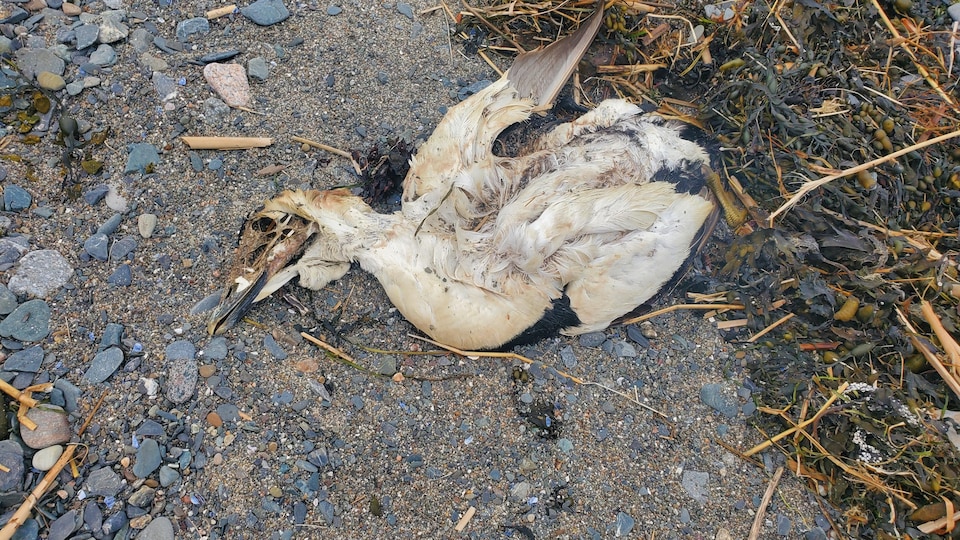Residents of Rimouski reported seeing an unusual number of dead birds on the shores, especially on those of Rocher-Blanc beach.
A resident of the area, Louise Bérubé, said she had counted 14 over a distance of about 600 meters, in front of îlet Canuel. This is the first time she has seen so many in over 25 years.
We saw eiders, mainly white geese, I also saw a guillemot. And that is really not a usual situation. Everyone walking here has seen those birds and wondered what was going on.
she argues.
Before this winter, the avian influenza virus had only been detected in farmed birds in North America, but it has been circulating in Europe in wild birds since 2020.
The spread was therefore closely monitored in the province and biologists say they are not surprised that infections with this virus are now confirmed in wild birds in Quebec.
This is particularly the case of the teacher and researcher in biology at the Cégep de Rimouski, David Pelletier.
” Maybe it was inevitable that it would happen one day. »
It is certain that for a few years, we had information from the Canadian banding office that these were viruses that were spreading and that, potentially, they were going to arrive in North America.
he explains.
On the other hand, veterinarian Stéphane Lair, director of the Quebec Center for Wild Animal Health, where autopsies are carried out on specimens for which cases of avian flu have been confirmed, says he is surprised at the speed of the spread of the disease. .
According to him, cases have been detected in particular in wild geese and Canada geese.
He adds that birds in North America have no immunity to the virus and are therefore more likely to develop an infection.
” The virus arrived in North America during the winter. »
He believes that it may be necessary to wait until the end of the nesting period before seeing the cases subside.
We had the hope that once the migrations had passed, once the geese had moved north, and a large proportion of the geese, we were in favor of seeing a decrease. There, what seems to be happening, with what we see with the gannets and which we will perhaps be able to confirm with the eiders, is that there seems to be a transmission at the level of the sites nesting
supports the veterinarian.
Mr. Lair also indicates that birds of prey have also been infected with the virus since they feed on the carcasses of other birds.
David Pelletier and Stéphane Lair point out that the transmission of avian influenza to humans is infrequent.
No beach cleanups planned at this time.
In a response sent in writing, the Ministry of Forests, Wildlife and Parks (MFFP) specifies thatother than the bird carcass recovery work in the Magdalen Islands, there is currently no other situation leading to the planning of other dead bird carcass recovery work elsewhere in the Eastern Quebec.
However, the Department indicates that citizens who find dead birds are invited to report them.
the MFFP adds that each situation is assessed on a case-by-case basis and that he remains in contact with the Ministry of the Environment and the Fight against Climate Change on this issue.
With information from Michaële Perron-Langlais
Reference-ici.radio-canada.ca
